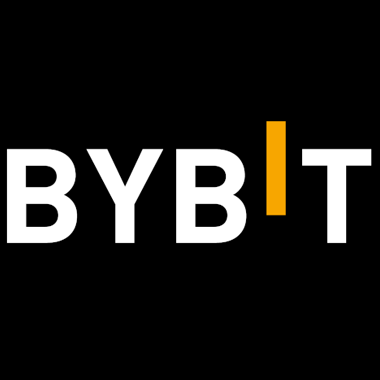Twitter Bitcoin Scam Hack Reveals Risks of Insider Threats and Social Engineering
Published on: 08 Jul 2025

In July 2020, Twitter suffered one of the most high-profile cybersecurity incidents in social media history. Attackers used social engineering to gain access to Twitter’s internal employee tools, allowing them to hijack verified accounts of prominent figures such as Elon Musk, Barack Obama, Bill Gates, and companies like Apple and Uber.
The compromised accounts posted fraudulent tweets promoting a Bitcoin giveaway scam, duping thousands of followers into sending cryptocurrency to attacker-controlled wallets.
🚨 How the Hack Occurred
The attackers targeted Twitter employees through spear-phishing and phone-based social engineering attacks. They tricked employees into revealing their credentials or session tokens, which granted them access to internal administrative tools.
With these tools, the attackers could:
Reset passwords and take over verified accounts
Post tweets with malicious links soliciting Bitcoin transfers
Access direct messages and private account information in some cases
The attack was a stark demonstration of how human vulnerabilities and insider threats can bypass even strong perimeter defenses.
📉 Impact and Aftermath
The Twitter hack had significant consequences:
The scam defrauded victims out of over $100,000 in Bitcoin within hours
Public trust in Twitter’s security was severely damaged
Twitter faced intense regulatory scrutiny and lawsuits
The incident raised global awareness of insider threat risks in social media platforms
Twitter responded by temporarily restricting verified accounts from tweeting and implemented stronger security controls for employee access.
🔍 Security Gaps Exposed
Key vulnerabilities included:
Insufficient Employee Security Training
Employees were vulnerable to sophisticated social engineering tactics.
Excessive Internal Access Permissions
Broad administrative privileges allowed attackers to control high-profile accounts.
Lack of Segregation and Monitoring
Inadequate monitoring of employee tool usage delayed incident detection.
🛠️ Remediation and Improvements
Following the breach, Twitter:
Enhanced employee cybersecurity training with a focus on social engineering defenses
Implemented stricter access controls and multi-factor authentication for internal tools
Increased monitoring and logging of administrative activities
Reassessed internal access policies to follow the principle of least privilege
💡 Lessons for Organizations
The Twitter Bitcoin scam underscores critical lessons:
Human factors are often the weakest link; invest in continuous employee security awareness.
Implement strict access management and enforce the least privilege principle.
Monitor internal tool usage to detect abnormal activities early.
Prepare incident response plans for insider threat scenarios.
🧠 Conclusion
The Twitter hack was a powerful reminder that no organization is immune to social engineering and insider threats. Effective cybersecurity requires blending technology with robust training, strict access policies, and vigilant monitoring to protect digital assets and maintain user trust.
The compromised accounts posted fraudulent tweets promoting a Bitcoin giveaway scam, duping thousands of followers into sending cryptocurrency to attacker-controlled wallets.
🚨 How the Hack Occurred
The attackers targeted Twitter employees through spear-phishing and phone-based social engineering attacks. They tricked employees into revealing their credentials or session tokens, which granted them access to internal administrative tools.
With these tools, the attackers could:
Reset passwords and take over verified accounts
Post tweets with malicious links soliciting Bitcoin transfers
Access direct messages and private account information in some cases
The attack was a stark demonstration of how human vulnerabilities and insider threats can bypass even strong perimeter defenses.
📉 Impact and Aftermath
The Twitter hack had significant consequences:
The scam defrauded victims out of over $100,000 in Bitcoin within hours
Public trust in Twitter’s security was severely damaged
Twitter faced intense regulatory scrutiny and lawsuits
The incident raised global awareness of insider threat risks in social media platforms
Twitter responded by temporarily restricting verified accounts from tweeting and implemented stronger security controls for employee access.
🔍 Security Gaps Exposed
Key vulnerabilities included:
Insufficient Employee Security Training
Employees were vulnerable to sophisticated social engineering tactics.
Excessive Internal Access Permissions
Broad administrative privileges allowed attackers to control high-profile accounts.
Lack of Segregation and Monitoring
Inadequate monitoring of employee tool usage delayed incident detection.
🛠️ Remediation and Improvements
Following the breach, Twitter:
Enhanced employee cybersecurity training with a focus on social engineering defenses
Implemented stricter access controls and multi-factor authentication for internal tools
Increased monitoring and logging of administrative activities
Reassessed internal access policies to follow the principle of least privilege
💡 Lessons for Organizations
The Twitter Bitcoin scam underscores critical lessons:
Human factors are often the weakest link; invest in continuous employee security awareness.
Implement strict access management and enforce the least privilege principle.
Monitor internal tool usage to detect abnormal activities early.
Prepare incident response plans for insider threat scenarios.
🧠 Conclusion
The Twitter hack was a powerful reminder that no organization is immune to social engineering and insider threats. Effective cybersecurity requires blending technology with robust training, strict access policies, and vigilant monitoring to protect digital assets and maintain user trust.



